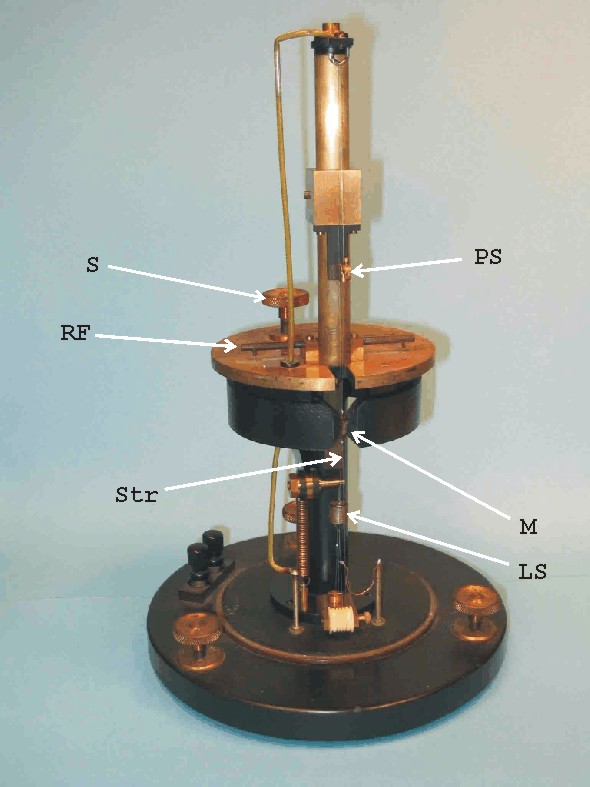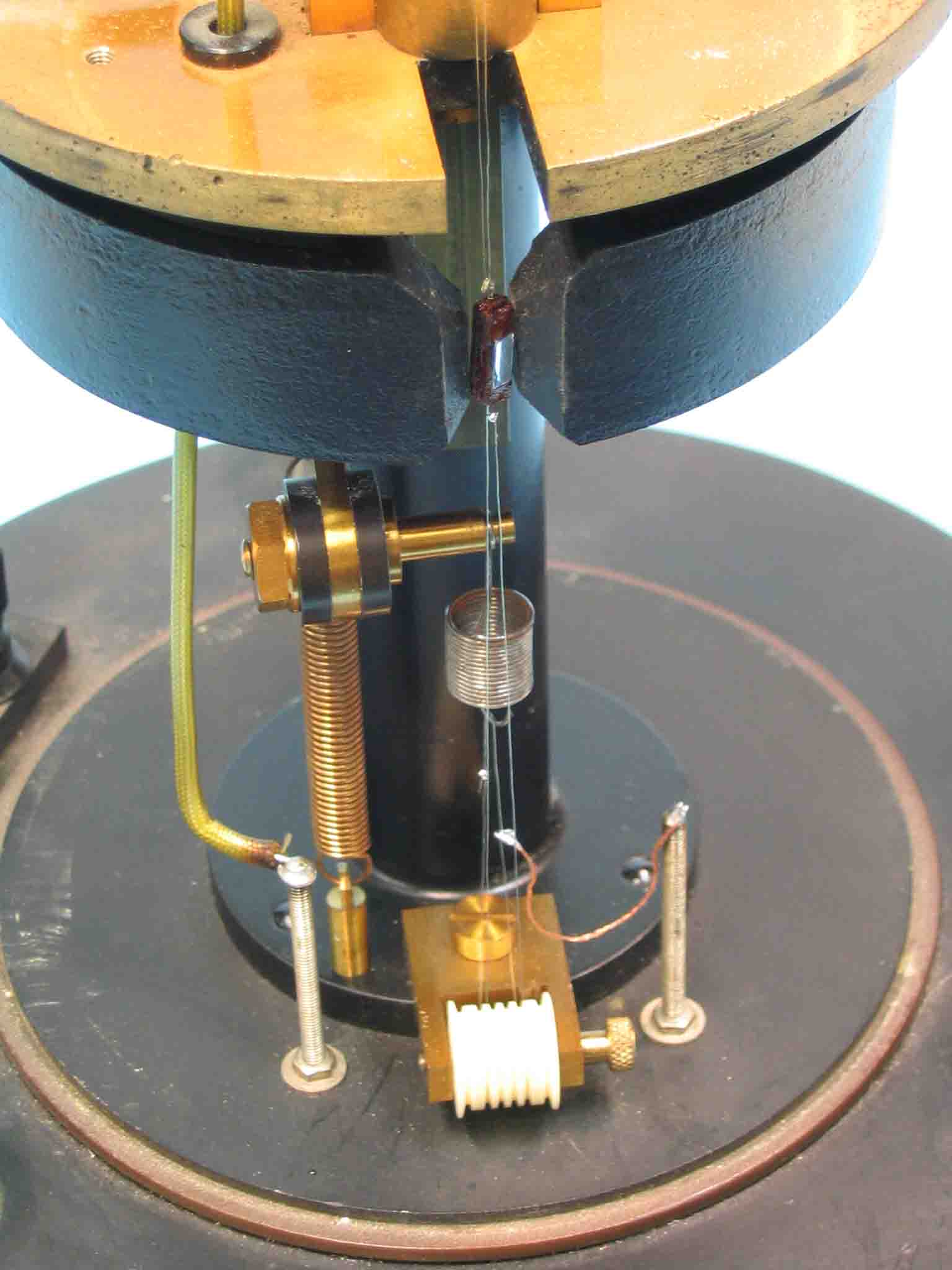
Cambridge Instruments UK, Type Campbell-Vibration Galvanometer
Its principle, has much in common with Schering's Vibration type Galvanometers
Consider also: Exhibits
Recent finding indicate, that this device can also be used as a "tuned detector". (source catalogue: Cambridge A.C. Indstruments for high frequencies, list 162, by the Cambridge and Paul Instruments Co. Ltd., Head office 45 Grosvenor Place, London, S.W. 1. pages 18-20)
Cambridge Catalogue No. 41521; frequencies between 40 and 1000
Reference: A. Campbell, Phys.Soc.Proc., 1907, xx 626, and 1919, xxxi, 85; also Dictionary of Applied Physics, 1922, ii. 960

(Circular metal covers being removed)
M = Mirror, being kit on a small body, which is supported by the a pair of upper and lower strings
LS = Spring, loading the tension of the vibrational strings (wires)
PS = Small pulley sheave, which has to adjust the vibrating-length of the string
RF = The pulley sheave position can be moved up and downwards by means of RF, as to tune (adjust) the galvanometer at its appropriate resonance frequency (viz. the optimal length of the string). We may think of frequencies of 25 - 125 Hz
S = Adjusting the string tension
Str = String (electrical conductor)
The string is obeying to Ampère’s law. When a current is flowing through a wire, which is placed in a magnetic field, a force will move this wire in to the direction of lower resulting magnetic flux. As we know: the direction of the alternating current in the wire (string) is periodically changing, the direction of the magnetic field around the string is also alternating. Consequently, the string will thus reciprocate its direction of movement.
By adjusting (tuning) the vibrational system at its resonant frequency (by means of RF and S), the Q-factor of this arrangement will amplify the system sensitivity, considerably

Details of the lower section of Campbell’s type vibration-galvanometer.
It can be seen, that the small device in the middle of the magnetic gap, is being positioned by means of two strings (wires) on either side. The small mirror is facing a bit out of the centre of the system. We have decided to leave it that way, as to prevent irreversible damage of this device.

Some additional details of Campbell's vibration type galvanometer
Back to: Archive displays
Back to: Exhibits